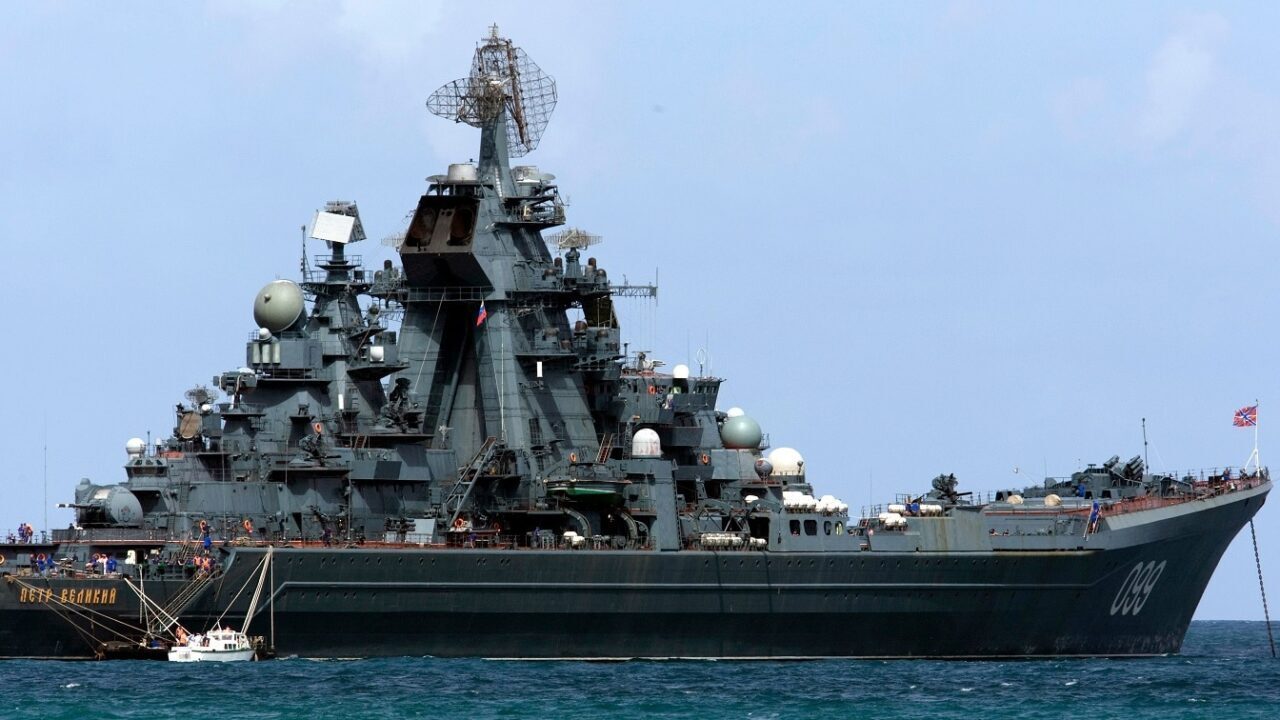Putin’s Battlecruisers: Meet the Kirov-Class: Russia’s Soviet-era Kirov class guided-missile cruiser was second in size only to aircraft carriers and armed with a massive arsenal of guns, rockets, missiles, and torpedos. And yet, its most distinctive feature may be its sea-based deployment of Russian S-300 air defenses.
Kirov-Class: Attack at Sea
There is only one Kirov-class left in active service; it is currently being repaired. The existence of a ballistic missile defense and counter-air capability such as the S-300 on the ship clearly impacts the threat equation. Russian-built S-300 air defenses, long thought of as highly effective and lethal road-mobile weapons, were configured to fire from the deck of the Kirov-class battlecruisers.
Integrating S-300s at sea certainly places attacking aircraft at great risk and, at the very least, complicates efforts to destroy the ship from the air. Along with the S-300s, the Kirov-class battleships integrate 9K33 short-range tactical air defenses into the warship.
A Russian media report from Sputnik details the S-300s on the Kirov-class ship, claiming its radar can track multiple aerial targets at altitudes of 30km and ranges out to 300 km.
“Pyotr Veliky is armed with 48 S-300F Fort and 46 S-300FM Fort-M (SA-N-20 Gargoyle) medium-range surface-to-air missiles (with effective range of up to 200 kilometers), 128 3K95 Kinzhal (SA-N-9 Gauntlet) short-range SAMs, and six CADS-N-1 Kashtan gun/missile systems,” as explained by Russian state media.
Russian and U.S. Navies Compete on Technologies
The question of greatest relevance related to the Kirov-class, however, may exist when it comes to comparing the Kirov-class ballistic missile defense to the U.S. Navy’s Aegis Combat System.
The operative factor here is the extent to which Russia’s ship-integrated S-300s can truly rival the integrated, software-enabled fire control, interceptor launch, and radar target tracking abilities of the Aegis system.
Aegis Baseline 10, now on U.S. Navy destroyers and cruisers, incorporates an ability to perform ballistic missile defense and air and cruise missile defense on a single system.
This increases efficiency, operational speed, and target-sharing data across otherwise disconnected threat areas. Given the ability of Aegis-capable U.S. Navy ships to combine these missions into a single system, it remains unclear if Russia’s 9K33 shorter-range air defenses were networked with the S-300s as an integrated system.
The ability to do this would be a key benchmark for Russian innovators and shipbuilders to attempt to match U.S. Navy technological advances.
For instance, are Russia’s ship-integrated S-300s connected to the more tactical 9K33 weapons for closer defenses? Should they be unable to share target tracking data in real-time with one another, they would likely present a much less significant threat to U.S. Navy air assets attacking from the air.
In end, however, Russia may be doing away with these so-called battlecruisers due to cost.
Kris Osborn is the Military Affairs Editor of 19FortyFive and President of Warrior Maven – Center for Military Modernization. Osborn previously served at the Pentagon as a Highly Qualified Expert with the Office of the Assistant Secretary of the Army—Acquisition, Logistics & Technology. Osborn has also worked as an anchor and on-air military specialist at national TV networks. He has appeared as a guest military expert on Fox News, MSNBC, The Military Channel, and The History Channel. He also has a Masters Degree in Comparative Literature from Columbia University.

